Are you heading to the Valley of Thracian Kings? This article is for you; it tells you everything you need to know to discover the Thracian Tombs in Bulgaria.

Located between Stara Planina and Sredna Gora Mountains, Bulgaria’s Valley of the Roses is known for its incredibly high-quality rose oil and for treasuring Bulgaria’s Thracian heritage.
Also known as the Valley of Thracian Kings, this is one of the several areas in the region known for its incredible collection of burial complexes that can be traced back to the Bronze Age. This article will tell you everything you need to know to discover the Thracian Tombs of Bulgaria.
Skip Ahead To My Advice Here!
About The Thracians
The Thracians were tribes that settled in the area known as Thrace during the Bronze, in the southern portion of the Balkans. Although different civilizations dominated and finally blended with the Thracian tribes, such as the Greeks, the Persians, and even the Romans.
The Thracians are thought to have played an essential role in history, and their legacy is mainly made of splendorous burial sites and rich objects found in the Valley of the Thracian Kings.
Homer first mentioned the Thracians in the Iliad as an ally to the Trojans during the Trojan war against the Greeks.
The Thracian Tombs Of Bulgaria
The Thracian Fortress Of Cape Kaliakra
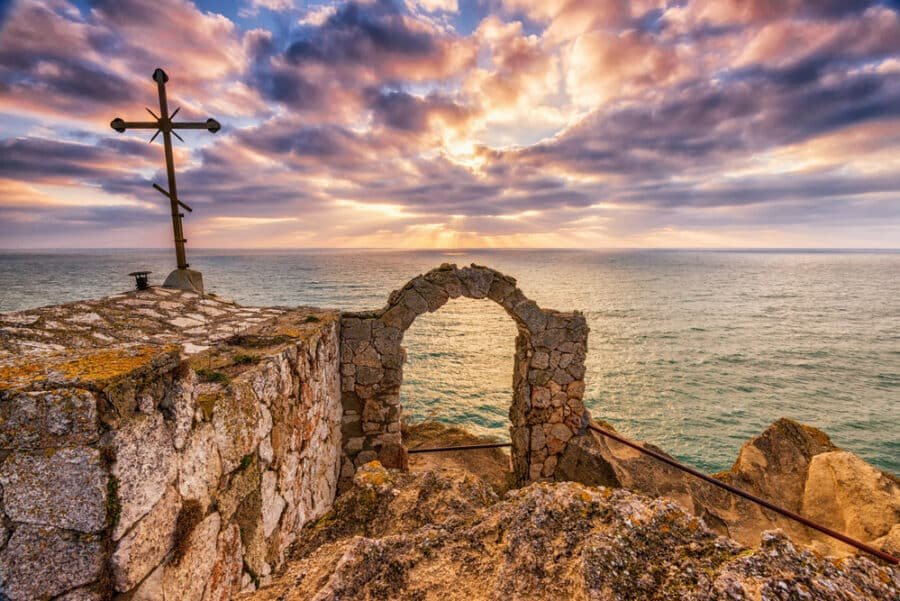
Kaliakra Cape is located on the northern Bulgarian Black Sea Coast, located about 60 kilometers from Varna. The impressive landscape features steep vertical cliffs that plummet for about 70 meters right into the sea.
The area was home to a citadel that was built initially by the Thracian tribe of Tiris that later on was conquered by the Greeks, the Romans, and the Byzantines.
Remains of the citadel can still be observed, including the ruins of an old church, former Roman settlements, and a small cave that now works as a museum exhibiting different objects that were unearthed in the surrounding region.
The area is also a protected natural reserve and features the gorgeous Bolata Beach, often dubbed as the most beautiful shore on the Black Sea.
The place is a 6-hour car ride from Sofia, although it is also possible to get there from nearby Varna.
Thracian Tomb Of Kazanlak
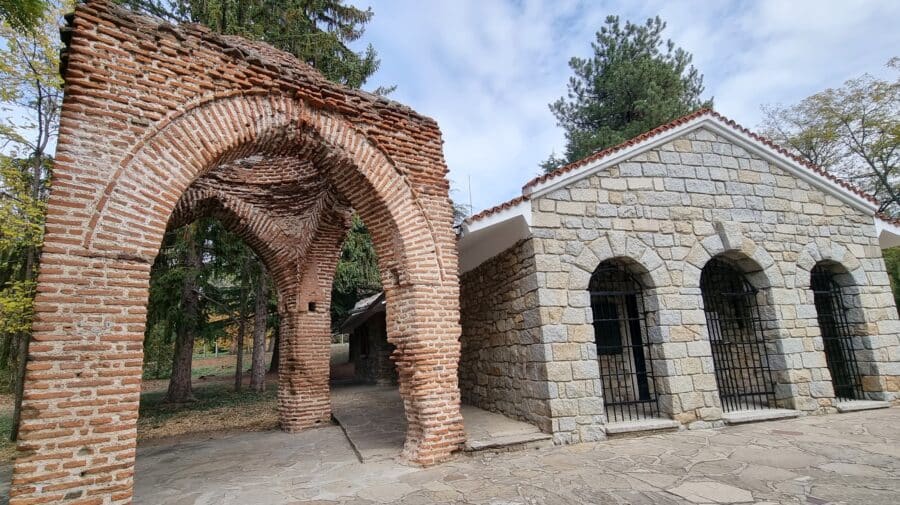
Dating from the IV century BC, this tomb is located near Seutopolis, the capital city of Thracian King Seutes III, and is part of a large Thracian necropolis.
Featuring a narrow corridor and a round burial chamber, the place is famous for its impressive murals and frescoes that shed light on the mystery surrounding the burial rites and death culture of the Thracians.
The paintings, considered some of the country’s best-preserved artistic heritage from the Thracian and Hellenistic periods, have placed this tomb on the list of UNESCO’s World Heritage Sites.
The most famous tomb and the only one protected by UNESCO. Inside the grave, it’s possible to observe various friezes with different themes and styles. The most famous of them features a man and a woman surrounded by musicians, servants, and wealth, and having a feast. All the frescoes in this tomb probably date back to the beginning of the III century BC.
This Thracian tomb is situated about 250 kilometers east of Sofia. Several organized tours leave both Sofia and Plovdiv to discover the place and other attractions in the surrounding area.
It is also a good idea to visit the History Museum of Kazanlak to admire the treasures found in the tombs that populate the Valley of the Thracian Kings.
About 5 kilometers from Kazanlak, it is also possible to visit the so-called Bulgarian Stonehenge, a late neolith-early bronze age Thracian sanctuary featuring two imposing structures, the Door of the Goddess Mother and the Father’s Stone. The former is a 2-meter high door that allows the sun to pass during the sunset, a symbol of birth for the Thracians.
King Seuthes III Tomb
Considered one of the best preserved ancient graves in Bulgaria, the Tomb of King Seuthes III is located at the Golyama Kosmatka mound near Shipka.
This impressive burial chamber features marble doors with sculpted figures and treasured incredible gems, such as weapons, jewelry, and lavish objects, such as a golden wine cup and a shell jewelry box, which is thought to be a gift from his wife.
Researchers consider the place to be the burial site of King Seuthes III due to the several coins with the image of the King found in the burial site and the expression of Seuthes carved on a vessel. Seuthes III was the King of the Odrysian Kingdom of Thrace and ruled from 331 to 300 BC.
This tomb, one of the most detailed and elaborated in the Valley of the Thracian Kings, is also located in the area of Kazanlak.
Thracian Sanctuary Of Belintash
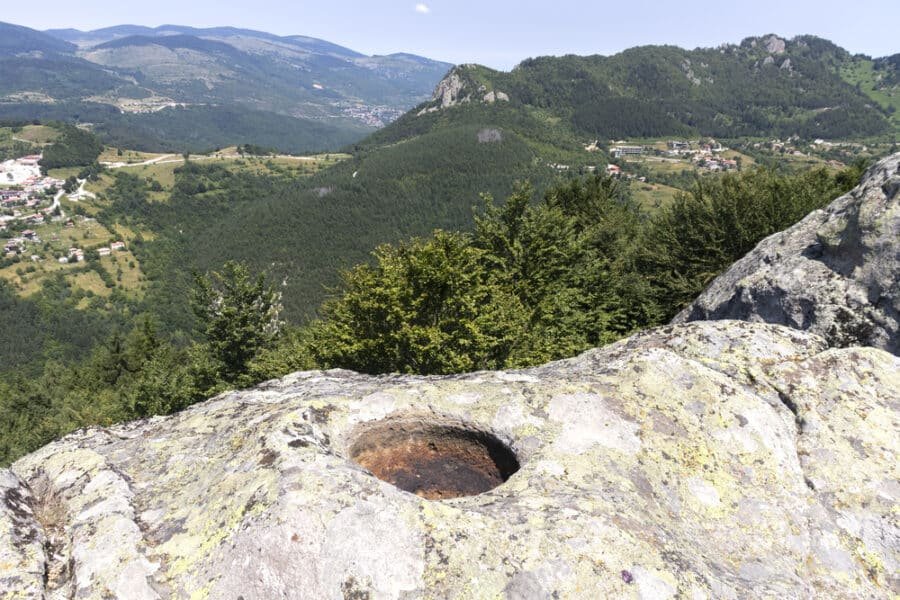
Considered a fantastic day trip from Plovdiv, this Thracian sanctuary is located in the heart of the Northern Rhodope Mountains. It hosts the largest sanctuary of the Thracian God Sabazios, God of the sky, agriculture, and medicine (the God was later known as Dionysius by the Greeks, although Sabazios had some traits that reminded them of Zeus as well).
According to other research, it is believed that the ancient Thracian tribe of the Bessi used this sanctuary to worship the God Sabazios since a silver votive tablet of the deity was found in the area. It is also believed that this sanctuary draws inspiration from the famous Delphi Sanctuary in Greece.
Due to the type of objects found in the area, some of them resembling astral charts and maps of stars, it is believed that Belintash houses a very unique energy that attracts hundreds of curious year after year.
The place is about 200 kilometers from Sofia and easy to reach from Plovdiv (about 50 kilometers).
Thracian Tomb Of Aleksandrov

This Thracian tomb and mound is located in the Haskovo province, on the southeastern side of Bulgaria, dating back to the IV century BC.
Although some of the frescoes were damaged during the finding and excavations, the place remains well-preserved. Still, it features some impressive traits, such as a three-meter round chamber accessible through a small antechamber and a tunnel decorated with frescoes reflecting the late Classical and Hellenistic styles.
Inside the main chamber, the fresco depicts a hunting scene and a naked man wielding a double axe, which would often represent royal power.
The best way to get there is to visit as a short excursion from Haskovo. The area is about 240 kilometers from Sofia and a short 75-minute ride from Plovdiv.
Mezek Tomb
Located in the village of Mezek, in the Svilengrad Municipality, a local villager accidentally discovered this Thracian beehive tomb. It represented one of the most interesting and impressive Mycenaean beehive tombs in Thrace.
A 15-meter-high mound covers this well-preserved burial site, and it was constructed of carved stone blocks connected by iron cramps. To access the tomb, visitors must walk along a 20-meter corridor (dromos) to then access two antechambers followed by a round funeral chamber with a beehive dome.
On the site, archaeologists found a vast collection of gold, bronze, and iron objects and artifacts made of glass and ceramics. Objects such as earrings, vessels, and candelabra with intricate decorations are part of the collection currently exhibited in Sofia and at the Haskovo museum.
The visitor center at the Mezek village offers guided visits to the tomb. Mezek is about 290 kilometers from Sofia, and travelers can quickly get there by car. There are also public buses and a night train that reaches the area.
Archaeologic Complex Of Perperikon
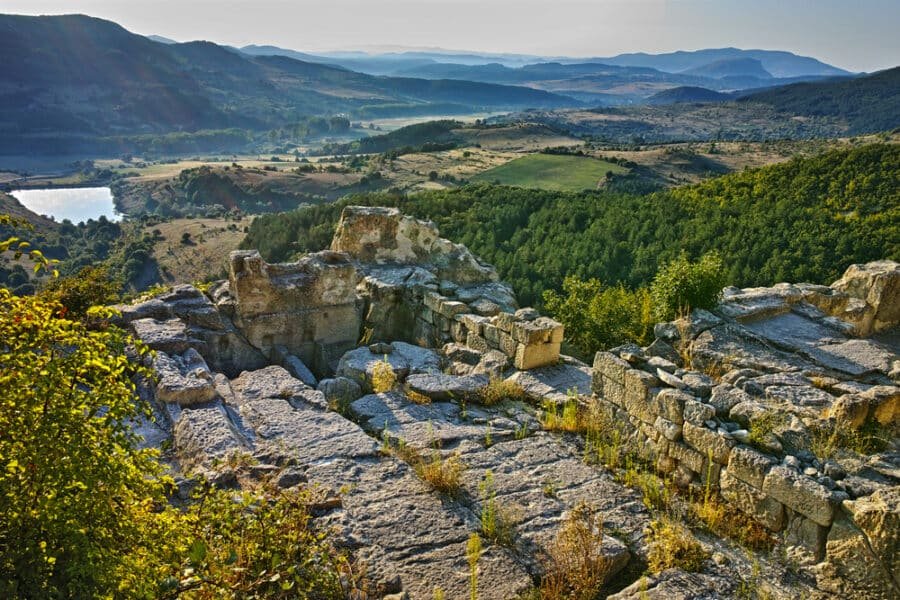
Inhabited as early as the Neolith period, the area presents ancient rock temples used by the dwellers who worshiped the mountain, or Holy Mount, probably a representation of the God of the Sun.
Although the place was abandoned until the Bronze Age, the Holy City of Perperikon has always had an important place in the history of the Balkans as it became, during that period, home to a huge cult complex with several cult chambers, stairs, and corridors that would reflect complicated religious rites performed by its inhabitants.
The area also has a Medieval Fortress on top of a rocky hill that includes a palace, a fortified Thracian fortress, and a circular occult temple.
The complex, entirely cut in the rocks, is one of Bulgaria’s most ancient megalith Thracian monuments.
This ancient sanctuary complex is located about 270 kilometers south of Sofia, and it is also close to the Thracian Sanctuary of Tatul, making it easy to visit both on the same day trip.
Beehive Tomb In Pomorie

Known as the antique beehive tomb of Pomorie, the burial complex dates back to the II-III century and important research made by historians concluded that it was a mausoleum of a wealthy Anhialo family and that it was used to perform ancient religious pagan rites.
Unique characteristics of this tomb include a 22-meter-long dromos, or corridor, and a characteristic round chamber made of stone and bricks. In the center of the arched tomb, a hollow column merges with the external wall.
This tomb features a one-of-a-kind structure, unique on the Balkan Peninsula, so much so that it attracts architects from all over the world who reach the area to study the tomb and its mushroom-shaped dome.
This tomb is located about 400 kilometers from Sofia and not far from Varna. In the area, it is also possible to visit Lake Burgas, the biggest natural lake in Bulgaria, and the incredible Lake Pomorie, about 2 kilometers north of Pomorie.
This natural saline lagoon is separated from the sea by an artificial dike. A channel in its southern end connects it with the Black Sea.
Ostrusha Burial Complex
Also known as the Ostrusha mound, this burial place is located close to the city of Shipka. It dates back to the mid-IV century BC and features stone structures lying beneath the 18-meter-high mound.
The burial area extends more than a hundred square meters and has six chambers made of solid granite blocks.
The main chamber features a roof block divided into square and circle-shaped niches filled with frescoes featuring humans, battle scenes, animals, plants, and geometric decorations.
The burial complex area is about 250 kilometers from Sofia and only 105 kilometers from Plovdiv (about a 90-minute drive).
Starosel Kings Complex
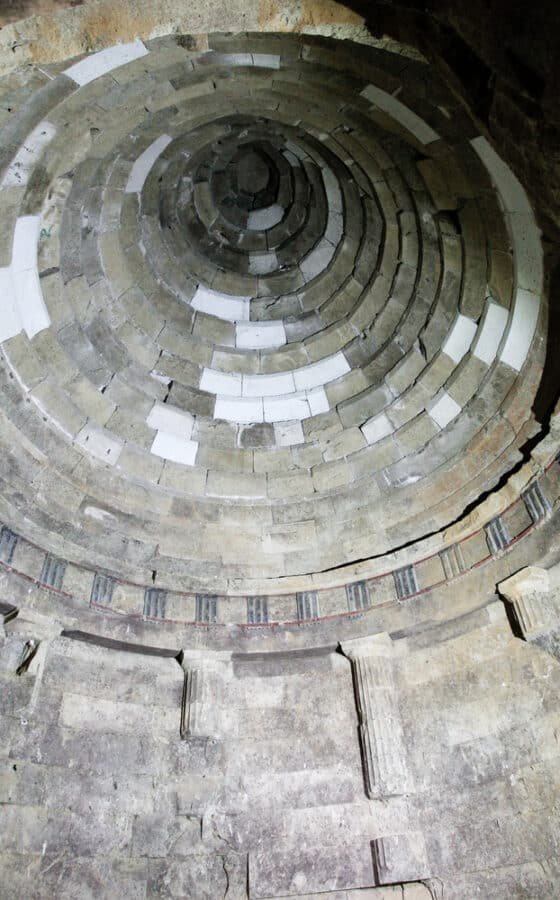
Six under-hill temples and a few royal burials discovered in 2000 give life to the Thracian Temple Complex in the Chetinyova Mogila, about 4 kilometers from the Starosel village.
The temple in the complex dates back to the end of the V century BC. It is the only Thracian temple featuring a ten-column colonnade placed on a foundation, with two cylinders and a capital in early Doric style.
Researchers found bronze arrowheads, silver beads, and golden plates inside the grave, indicating that the buried person belonged to a privileged class or held a high rank in society.
Thracian Sanctuary Of Tatul
Located near the Tatul Village, this Thracian sanctuary is an imposing megalithic monument, one of the most impressive ones in Bulgaria. It features a massive rock structure with a truncated pyramid dating back to the beginning of the IV century BC.
Inside the complex, you can admire two sarcophagi and a three-meter-deep well. Archaeological findings in the tombs surrounding the megalithic monument include hundreds of religious artifacts such as human clay idols, models of vessels, bronze items, three unique model wheels of a Heavenly Chariot, and a part of a gold mask.
Researchers believe that the sarcophagus and the truncated pyramid represent the funerals of Orpheus and King Rhesus of Thrace.
Other archaeological findings could explain that the sanctuary was also populated by the Romans as both numerous Roman ceramic artifacts and a fortified Roman villa were found.
The place is located about 15 kilometers away from Momchilgrad. You can get there by car from Sofia; the trip is about 3.5 hours. This is a fantastic road trip that will also allow you to visit nearby gems, including the Rhodopes Mountains, the ancient city of Perperikon, as well as the famous Rila and Bachkovo monasteries.
Sveshtari Thracian Tomb

Located near the Sveshtari Village, between the cities of Razgrad and Silistra, in northeast Bulgaria, this UNESCO World Heritage Site dates back to the III century BC. It depicts the typical structure of cult buildings belonging to the Thracian heritage.
The most important feature you can admire is the impressive architectural decor, displaying colorful caryatids and painted murals.
The central chamber has ten caryatids carved in high relief on the walls. At the same time, the vault decorations, unique in this region, can be related to the culture of those Thracians influenced by the Hellenistic culture (known as the Getaes).
This is one of only two Thracian tombs in Bulgaria to have been listed as a UNESCO World Heritage Site, while the other one is the Thracian Tomb of Kazanlak.
The lack of frequent bus lines connecting Razgrad and Sofia makes the trip quite tedious. Therefore, the best way to get there is via car rental or private transfer. The drive from Sofia is about 8 hours. It’s also possible to reach Razgrad via Veliko Tarnovo by public bus.
- Visiting Hours: typically open daily – 9 am to 5 pm (winter) & 9 am – 8 pm (summer)
- Day Tours: available from almost any area in Bulgaria
- Day Trips: easiest from Varna and Plovdiv, but also Veliko Tarnovo and the famous ski resort in Bansko

